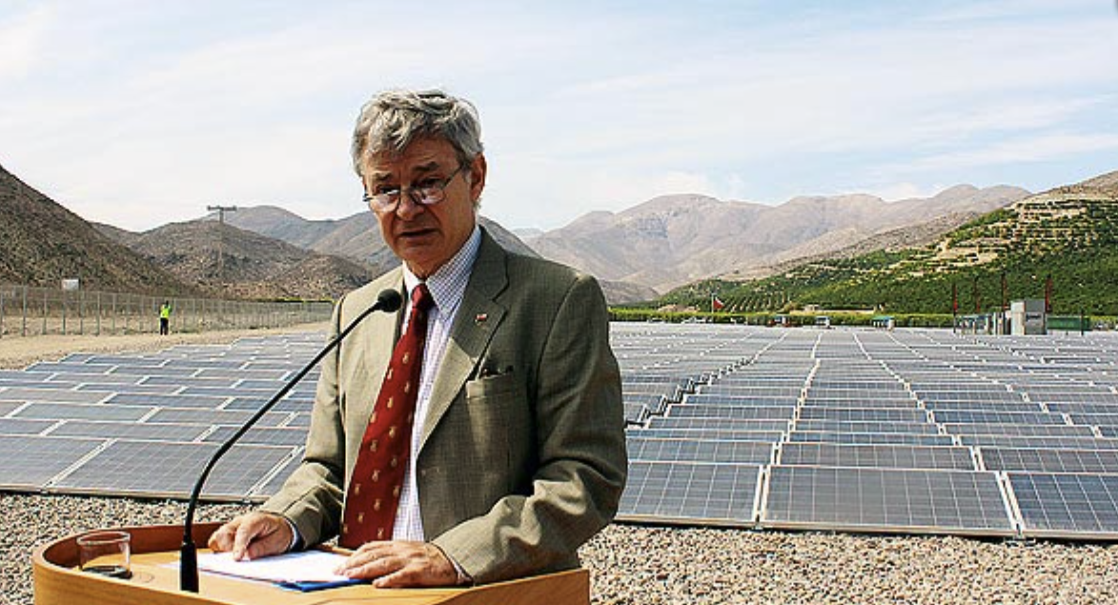Chile connects 1.2 MW of PV
On Jan. 10, 2013, Chilean Minister of Energy Jorge Bunster oversaw the commissioning of the nation's first PV plant to be linked to the Central Interconnected System (SIC).
The 1.2 MW project – constructed by Santiago-based engineering group Kaltemp and Germany's Juwi – features 5,200 solar panels. It is situated near the city of Vicuña, Elqui province. It was the third operational PV plant in the country.
Bunster said that Chile had an active 3,107 MW solar project portfolio, with an additional 908 MW under environmental review. In addition, Chile's National Energy Commission (CNE) said that it was feasible to connect up to 2.2 GW of solar to the national grid over the next 15 years.
World-efficiency records
Germany's Heliatek GmbH said its organic solar cells now possess an accredited efficiency of 12%, surpassing its prior record of 10.7% set merely nine months earlier in 2012. This remarkable progress has prompted plans for the commercial launch of initial applications by the end of 2013. Concurrently, Heliatek has initiated a fundraising campaign, targeting €60 million from both current and fresh investors. This capital infusion aims to facilitate the establishment of a new production line.
In parallel, the Swiss Federal Laboratories for Materials Science and Technology (EMPA) made a significant stride by introducing a thin-film-on-polymer CIGS cell boasting an impressive efficiency of 20.4%, representing a new milestone. EMPA emphasized that this novel cell now matches the efficiency of cells founded on polycrystalline silicon wafers, a notable achievement. Team leader Ayodhya Tiwari further emphasized the success, stating that they have effectively bridged the “efficiency gap” between solar cells based on polycrystalline silicon wafers and CIGS thin-film cells on glass.
Bankruptcy rumors
There were persistent rumors of a potential bankruptcy at Trina Solar in 2013. Speculation was sparked by an unusual incident in which analyst Richard Pearson said on Seeking Alphathat Trina Solar had acquired polysilicon at unsustainable prices. He claimed that the deals were struck at levels exceeding the module maker's profit potential. Company sources promptly refuted the claims and issued a warning, reserving the right to hold those responsible accountable through legal means.
United States backs solar
In his inaugural speech in January 2013, re-elected US President Barack Obama focused on sustainable energy. He said that America needed to lead the transition, rather than relinquish the technological advantage to other nations. He also noted the importance of preserving the environment for future generations. “We will respond to the threat of climate change, knowing that the failure to do so would betray our children and future generations,” he said.
LatAm's solar ambitions
In 2013, Latin America emerged as a promising market for solar, with the region announcing 8.4 GW of new solar projects in the preceding 12 months. This surge prompted GTM Research to predict an additional 450 MW of new grid-connected capacity to be commissioned in 2013. Notably, Mexico and Chile took the lead in this solar expansion, with Brazil, Ecuador, Argentina, the Dominican Republic, Peru, and Jamaica also making notable contributions to the region's solar ambitions.
German achievements
Germany's accomplishments in solar energy reached new heights in 2013, building upon remarkable achievements in the preceding year. In 2012, the country added 7.6 GW of new PV to the grid. By February 2013, PV systems were set to receive feed-in tariffs (FIT) ranging from 0.1152/kWh to 0.1664/kWh, underscoring Germany's position as a solar energy leader.
This content is protected by copyright and may not be reused. If you want to cooperate with us and would like to reuse some of our content, please contact: editors@pv-magazine.com.



By submitting this form you agree to pv magazine using your data for the purposes of publishing your comment.
Your personal data will only be disclosed or otherwise transmitted to third parties for the purposes of spam filtering or if this is necessary for technical maintenance of the website. Any other transfer to third parties will not take place unless this is justified on the basis of applicable data protection regulations or if pv magazine is legally obliged to do so.
You may revoke this consent at any time with effect for the future, in which case your personal data will be deleted immediately. Otherwise, your data will be deleted if pv magazine has processed your request or the purpose of data storage is fulfilled.
Further information on data privacy can be found in our Data Protection Policy.